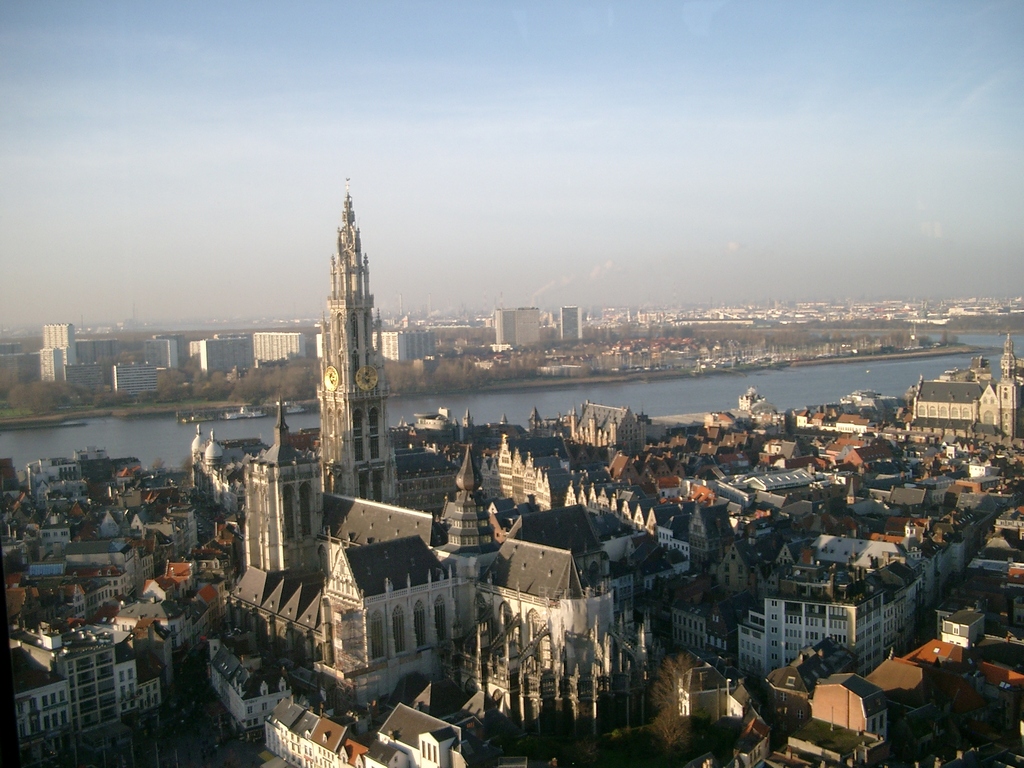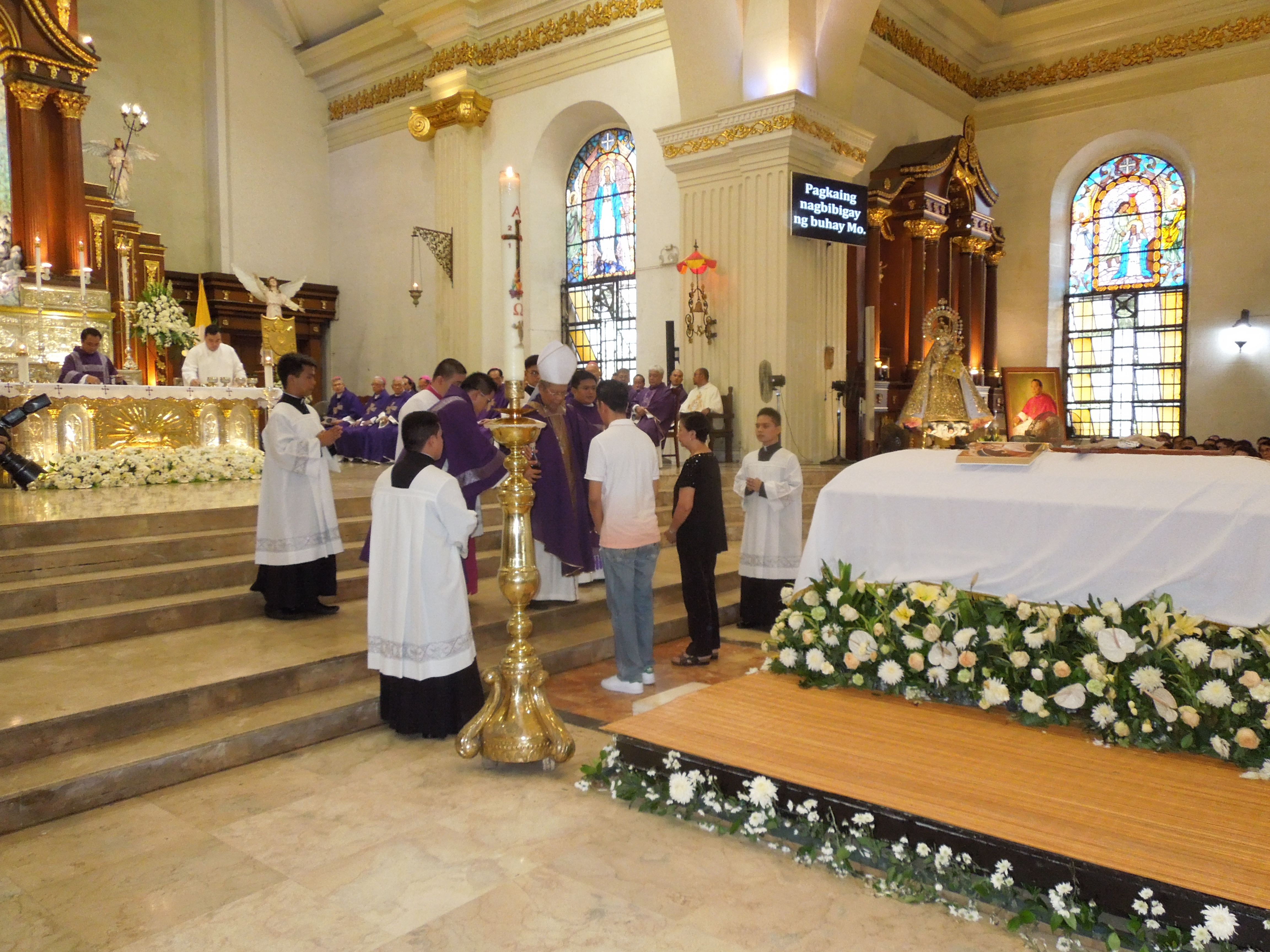|
Diest
Diest () is a city and municipality located in the Belgian province of Flemish Brabant. Situated in the northeast of the Hageland region, Diest neighbours the provinces of Antwerp to its North, and Limburg to the East and is situated around 60 km from Brussels. The municipality comprises the city of Diest proper and the towns of Deurne, Kaggevinne, Molenstede, Schaffen and Webbekom. As of January 1, 2006, Diest had a total population of 22,845. The total area is 58.20 km2 which gives a population density of 393 inhabitants per km2. History Between 1499 and 1795 the town was controlled by the House of Nassau (as were Breda in the Netherlands, Dillenburg in Germany and Orange in France) which was also the family of the Princes of Orange who at the end of the Napoleonic Wars became in 1815 the kings and queens of the Netherlands after the termination of the Dutch republic at the hands of revolutionary forces in 1795. The most famous representative of the House o ... [...More Info...] [...Related Items...] OR: [Wikipedia] [Google] [Baidu] [Amazon] |
John Berchmans
John Berchmans, SJ ( ; 13 March 1599 – 13 August 1621) was a Belgian Jesuit scholastic and is revered as a saint in the Catholic Church. In 1615, the Jesuits opened a college at Mechelen, Belgium and Berchmans was one of the first to enroll. His spiritual model was his fellow Jesuit Aloysius Gonzaga, and he was influenced by the example of the English Jesuit martyrs. Berchmans is the patron saint of altar servers, Jesuit scholastics, and students. Early life John Berchmans was born on 13 March 1599, in the city of Diest situated in what is now the Belgian province of Flemish Brabant, the son of a shoemaker. His parents were John Charles and Elizabeth Berchmans. He was the oldest of five children and at baptism was named John in honor of John the Baptist. He grew up in an atmosphere of political turmoil caused by a religious war between the Catholic and Protestant parts of the Low Countries. When he was age nine, his mother was stricken with a very long and a very se ... [...More Info...] [...Related Items...] OR: [Wikipedia] [Google] [Baidu] [Amazon] |
Willem Ignatius Kerricx
Willem Ignatius Kerricx (Antwerp, baptized on 22 April 1682 – Antwerp, 4 January 1745) was a Flemish people, Flemish sculptor, painter, draftsman, architect, engineer, playwright and author active in Antwerp in the first half of the 18th century.Willem Ignatius Kerricx at the Netherlands Institute for Art History His sculptural works comprise mostly sculptured church furniture, individual sculptures, mainly statues of saints for churches and a few funerary monuments. His sculptural style is typical for the late Flemish Baroque while he shows a preference for Classicism in his architectural projects. He took over the large family sculpture workshop in Antwerp. [...More Info...] [...Related Items...] OR: [Wikipedia] [Google] [Baidu] [Amazon] |
Philip William, Prince Of Orange
Philip William, Prince of Orange (19 December 1554 in Buren, Gelderland – 20 February 1618) was the eldest son of William the Silent by his first wife Anna van Egmont. He became Prince of Orange in 1584 and Knight of the Golden Fleece in 1599. Biography Philip William, Filips Willem in Dutch, was born on 19 December 1554 in Buren, Guelders, Seventeen Provinces. He was the first son of William the Silent and Anna van Egmont. When his father William the Silent ignored Alva's summons to return to Brussels, remaining in Germany, Philip William, only a boy of 13, was studying at the University at Leuven in Brabant. He was seized in February 1568 and taken to Spain partly as a hostage. The kidnapping was organized on the advice of Cardinal-Archbishop of Mechelen, Antoine Perrenot de Granvelle (1517-1586). He would never see his father again (his mother had already died ten years earlier). In Spain he continued his studies at the university of Alcalá de Henares. He mainly studi ... [...More Info...] [...Related Items...] OR: [Wikipedia] [Google] [Baidu] [Amazon] |
House Of Orange-Nassau
The House of Orange-Nassau (, ), also known as the House of Orange because of the prestige of the princely title of Orange, also referred to as the Fourth House of Orange in comparison with the other noble houses that held the Principality of Orange, is the current dynasty, reigning house of the Netherlands. A branch of the European House of Nassau, the house has played a central role in the Politics and government of the Netherlands (1581–1795), politics and government of the Netherlands and elsewhere in Europe, particularly since William the Silent organised the Dutch Revolt against Spain, Spanish rule, which after the Eighty Years' War (1568–1648) led to an Dutch Republic, independent Dutch state. William III of Orange led the resistance of the Netherlands and Europe to Louis XIV of France and orchestrated the Glorious Revolution in England that established parliamentary rule. Similarly, Queen Wilhelmina of the Netherlands was instrumental in the Dutch resistance during W ... [...More Info...] [...Related Items...] OR: [Wikipedia] [Google] [Baidu] [Amazon] |
Leuven Administrative Arrondissement
The Leuven Arrondissement (; ) is one of two Arrondissements of Belgium, arrondissements in the Belgium, Belgian province of Flemish Brabant. It lies east of the Brussels-Capital Region. The arrondissement has an area of and has (as of January 1, 2017) 502,602 inhabitants. Municipalities The arrondissement is made up of the following municipalities: *Aarschot *Begijnendijk *Bekkevoort *Bertem *Bierbeek *Boortmeerbeek *Boutersem *Diest *Geetbets *Glabbeek *Haacht *Herent *Hoegaarden *Holsbeek *Huldenberg *Keerbergen *Kortenaken *Kortenberg *Landen *Leuven *Linter, Belgium, Linter *Lubbeek *Oud-Heverlee *Rotselaar *Scherpenheuvel-Zichem *Tervuren *Tielt-Winge *Tienen *Tremelo *Zoutleeuw Deelgemeente, Formerly independent municipalities or deelgemeenten: *Aarschot *Assent (Belgium), Assent *Attenhoven *Attenrode *Averbode (village), Averbode *Baal (Tremelo), Baal *Begijnendijk *Bekkevoort *Bertem *Betekom *Bierbeek *Binkom *Blanden *Boortmeerbeek *Bost (Tienen), Bost *Bo ... [...More Info...] [...Related Items...] OR: [Wikipedia] [Google] [Baidu] [Amazon] |
Demer
The Demer is an long river in eastern Belgium, and a right tributary of the Dijle. It flows through the Belgian provinces Limburg and Flemish Brabant. Its source is near Tongeren. It flows into the river Dijle in Werchter, Rotselaar municipality. The most important towns along the Demer are (starting from the source) Bilzen, Hasselt, Diest and Aarschot. Tributaries of the Demer are the rivers Herk, Gete and Velp (all three in Halen Halen (), formerly Haelen (), is a municipality and city located in the Belgian province of Limburg, to the west of Hasselt. On January 1, 2018, Halen had a total population of 9,461. The total area is 36.29 km2 which gives a population de ...). The name "Demer" comes from the Celtic language words "tam" (dark coloured) and "ara" (water) giving rise to a name meaning "dark coloured river". The Winter brook (Beringen) is a tributary of the Demer River. External link Lock on the Demer at Aarschot in 1940.from the Site of the Wa ... [...More Info...] [...Related Items...] OR: [Wikipedia] [Google] [Baidu] [Amazon] |
Flemish Brabant
Flemish Brabant ( ; ) is a province of Flanders, one of the three regions of Belgium. It borders on (clockwise from the North) the Belgian provinces of Antwerp, Limburg, Liège, Walloon Brabant, Hainaut and East Flanders. Flemish Brabant also surrounds the Brussels-Capital Region. Its capital is Leuven. It has an area of which is divided into two administrative districts (''arrondissementen'' in Dutch) containing 65 municipalities. As of January 2024, Flemish Brabant had a population of over 1.19 million. Flemish Brabant was created in 1995 by the splitting of the former province of Brabant into three parts: two new provinces, Flemish Brabant and Walloon Brabant; and the Brussels-Capital Region, which no longer belongs to any province. The split was made to accommodate the eventual division of Belgium in three regions (Flanders, Wallonia and the Brussels-Capital Region). The province is made up of two arrondissements. The Halle-Vilvoorde Arrondissement surrounds Brussels a ... [...More Info...] [...Related Items...] OR: [Wikipedia] [Google] [Baidu] [Amazon] |
Hageland
The Hageland is a landscape in the Flemish Region of Belgium, situated in the eastern part of the Province of Flemish Brabant. It is mainly comprised between the cities of Aarschot, Leuven, Tienen and Diest, and probably coincides to some extent with the twelfth-century County of Leuven. The French Government that controlled the area that later became Belgium in the last years of the 18th and early 19th century, had extended Limburg, which since then comprises the minor part of the Hageland at the city of Halen. The name refers to land with dense (low) forest and/or undergrowth. Its earliest attestation (spelled as ''Hagelant'') dates from 1528. Geography The area is a series of east–west–directed ridges of ironstone hills. The ridge that includes the 106-metre-high ''Molenberg'' hill at the village of Pellenberg forms the southern border of the Hageland, and the Velp, a tributary of the Demer, limits its southeast. Touristic publications of Hageland often erroneously in ... [...More Info...] [...Related Items...] OR: [Wikipedia] [Google] [Baidu] [Amazon] |
Antwerp (province)
Antwerp Province (; ; ; ), between 1815 and 1830 known as Central Brabant ( , , ), is the northernmost province both of the Flemish Region, also called Flanders, and of Belgium. It borders on the North Brabant province of the Netherlands to the north and the Belgian provinces of Limburg, Flemish Brabant and East Flanders. Its capital is Antwerp, which includes the Port of Antwerp, the second-largest seaport in Europe. It has an area of , and with over 1.92 million inhabitants as of January 2024, is the country's most populous province. The province consists of three arrondissements: Antwerp, Mechelen and Turnhout. The eastern part of the province comprises the main part of the Campine region. History During the early Middle Ages the region was part of the Frankish Empire, which was divided into several '' pagi''. The territory of the present-day province belonged to several ''pagi'' of which the region around what would become the city of Antwerp belonged to the Pagus Rene ... [...More Info...] [...Related Items...] OR: [Wikipedia] [Google] [Baidu] [Amazon] |
Requiem Mass
A Requiem (Latin: ''rest'') or Requiem Mass, also known as Mass for the dead () or Mass of the dead (), is a Mass of the Catholic Church offered for the repose of the souls of the deceased, using a particular form of the Roman Missal. It is usually celebrated in the context of a funeral (where in some countries it is often called a Funeral Mass). Musical settings of the propers of the Requiem Mass are also called Requiems, and the term has subsequently been applied to other musical compositions associated with death, dying, and mourning, even when they lack religious or liturgical relevance. The term is also used for similar ceremonies outside the Catholic Church, especially in Western Rite Orthodox Christianity, the Anglo-Catholic tradition of Anglicanism, and in certain Lutheran churches. A comparable service, with a wholly different ritual form and texts, exists in the Eastern Orthodox and Eastern Catholic churches as well as some Methodist churches. The Mass and its s ... [...More Info...] [...Related Items...] OR: [Wikipedia] [Google] [Baidu] [Amazon] |
Twin Towns And Sister Cities
A sister city or a twin town relationship is a form of legal or social agreement between two geographically and politically distinct localities for the purpose of promoting cultural and commercial ties. While there are early examples of international links between municipalities akin to what are known as sister cities or twin towns today dating back to the 9th century, the modern concept was first established and adopted worldwide during World War II. Origins of the modern concept Throughout history, many cities have participated in various cultural exchanges and similar activities that might resemble a sister-city or twin-city relationship, but the first officially documented case of such a relationship was a signed agreement between the leaders of the cities of Toledo, Ohio and Toledo, Spain in 1931. However, the modern concept of town twinning appeared during the Second World War. More specifically, it was inspired by the bombing of Coventry on 14 November 1940, known as t ... [...More Info...] [...Related Items...] OR: [Wikipedia] [Google] [Baidu] [Amazon] |
World War II
World War II or the Second World War (1 September 1939 – 2 September 1945) was a World war, global conflict between two coalitions: the Allies of World War II, Allies and the Axis powers. World War II by country, Nearly all of the world's countries participated, with many nations mobilising all resources in pursuit of total war. Tanks in World War II, Tanks and Air warfare of World War II, aircraft played major roles, enabling the strategic bombing of cities and delivery of the Atomic bombings of Hiroshima and Nagasaki, first and only nuclear weapons ever used in war. World War II is the List of wars by death toll, deadliest conflict in history, causing World War II casualties, the death of 70 to 85 million people, more than half of whom were civilians. Millions died in genocides, including the Holocaust, and by massacres, starvation, and disease. After the Allied victory, Allied-occupied Germany, Germany, Allied-occupied Austria, Austria, Occupation of Japan, Japan, a ... [...More Info...] [...Related Items...] OR: [Wikipedia] [Google] [Baidu] [Amazon] |





